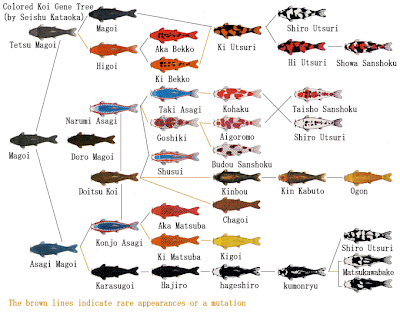The Ultimate Guide to Finding the Optimal pH for Your Koi Pond
Introduction
Keeping Koi fish is an enjoyable and rewarding hobby, but it also requires some commitment and knowledge to maintain a healthy environment for your fish to thrive. One of the essential factors in creating a healthy environment for Koi fish is understanding and maintaining the optimal pH levels of the pond water. In this guide, we will explore everything you need to know about finding and maintaining the optimal pH levels for your Koi pond.
Understanding pH Levels
Let’s start with understanding what pH level is. pH stands for potential hydrogen and is the measure of acidity or alkalinity of water. The scale ranges from 0 to 14, where a pH of 7.0 is considered neutral. Anything below 7.0 is acidic, and anything above 7.0 is alkaline. Koi fish prefer to live in a neutral or slightly alkaline environment, which means the optimal pH range of a Koi pond should be between 7.0 and 8.0.

Effects of pH Imbalance on Koi Fish
Like any other living being, Koi fish are sensitive to environmental changes, and even a slight change in pH levels can have adverse effects on their health and wellbeing. If the pH level of the water is too low, it can cause stress and harm to the fish’s skin and gills, affecting their immune system and making them more susceptible to diseases. On the other hand, high pH levels can cause harmful bacteria to grow, leading to skin irritation, discoloration, and even death.
Factors Affecting pH Levels
Several factors can affect the pH levels of your Koi pond, including:
- Water source: The pH level of the water source can vary depending on the area’s geology and other factors.
- Filtration system: The type and capacity of the filtration system can affect the pH levels of the water.
- Fish waste: Fish waste produces ammonia, which can lower the pH levels of the water.
- Algae growth: Algae growth can increase the pH levels of the water due to photosynthesis.
- Rainwater: Heavy rainfall can affect the pH levels of the pond water.
Testing pH Levels
The only way to know the pH levels of your Koi pond is to test the water regularly. You can purchase pH testing kits from any pet store or online retailer. The kits are inexpensive and easy to use. All you need to do is take a sample of the pond water, add the reagent provided in the kit, and compare the color of the water to the kit’s color chart to determine the pH level.

Adjusting pH Levels
Once you have determined the pH levels of your pond water, you can take steps to adjust it to the optimal range. If the pH level is too low, add a pH increaser like sodium bicarbonate or baking soda. If the pH level is too high, add a pH decreaser like sulfuric acid or hydrochloric acid. It’s crucial to follow the instructions provided with the products and add them gradually, allowing time for the pH levels to stabilize before testing again.

Conclusion
Maintaining the optimal pH levels of your Koi pond plays a significant role in the health and wellbeing of your fish. Regular testing and proper adjustment are essential for creating a safe and healthy environment for your Koi fish to thrive. By following the steps outlined in this guide, you can ensure that your Koi pond has optimal pH levels and provides a comfortable home for your fish to live for years to come.